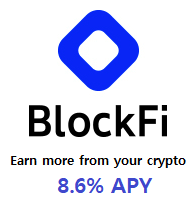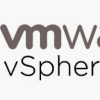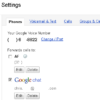Control of GBLX BGP Community Attributes
GBLX allows customers to modify various attributes of their announced prefixes within the GBLX network. Customers can alter the local preference of their prefixes, thus changing whether a prefix is chosen as the preferred route. However, many external influences can affect whether any given prefix is chosen as the best route. If you are multihomed and GBLX hears your route(s) from another provider and you alter your local preference to a value lower than the peer’s value, the peer learned prefix will be chosen.
|
BGP Community String |
Action |
| 3549:100 | set local preference 100 |
| 3549:200 |
set local preference 200 |
|
3549:275 |
set local preference 275 |
| 3549:300 | set local preference 300 |
| 3549:350 | set local preference 350 |
Control of Route Propagation
GBLX provides the customer limited control over how their prefixes are propagated to various network peers. This is accomplished using as-path prepending at the GBLX-Peer border. The following BGP communities may be sent to prepend customer announced prefixes:
|
BGP Community String |
Action |
| 3549:600 | Deny inter-continental export of tagged prefix [iBGP]. |
| 3549:666 | Deny inter-as export of tagged prefix (deny to peers, send to customers) [eBGP]. |
|
ASN |
Peer |
No Export |
Prepend +1 |
Prepend +2 |
Prepend +3 |
| 174 | Cogent | 8280 | 8281 | 8282 | 8283 |
| 209 | Qwest | 8010 | 8011 | 8012 | 8013 |
| 577 | Bellnexxia | 8090 | 8091 | 8092 | 8093 |
| 701 | MCI | 8030 | 8031 | 8032 | 8033 |
| 1239 | Sprint | 8060 | 8061 | 8062 | 8063 |
| 1257 | Tele2 | 8110 | 8111 | 8112 | 8113 |
| 1299 | TeliaSonera | 8250 | 8251 | 8252 | 8253 |
| 1668 | AOL | 8070 | 8071 | 8072 | 8073 |
| 2497 | JPNIC | 8080 | 8081 | 8082 | 8083 |
| 2516 | KDDI | 8100 | 8101 | 8102 | 8103 |
| 2828 | XO | 8260 | 8261 | 8262 | 8263 |
| 2914 | NTT Verio | 8120 | 8121 | 8122 | 8123 |
| 3257 | Tiscali | 8240 | 8241 | 8242 | 8243 |
| 3300 | InfoNet Europe | 8130 | 8131 | 8132 | 8133 |
| 3303 | Swisscom | 8140 | 8141 | 8142 | 8143 |
| 3320 | DTAG | 8150 | 8151 | 8152 | 8153 |
| 3356 | Level 3 | 8160 | 8161 | 8162 | 8163 |
| 3561 | Savvis | 8170 | 8171 | 8172 | 8173 |
| 4134 | ChinaNet | 8230 | 8231 | 8232 | 8233 |
| 5511 | OpenTransit | 8190 | 8191 | 8192 | 8193 |
| 6453 | Teleglobe | 8210 | 8211 | 8212 | 8213 |
| 6461 | AboveNet | 8200 | 8201 | 8202 | 8203 |
| 6762 | Seabone (TI) | 8050 | 8051 | 8052 | 8053 |
| 6830 | UPC/Chello | 8180 | 8181 | 8182 | 8183 |
| 7018 | AT&T (US) | 8220 | 8221 | 8222 | 8223 |
| 7473 | Singtel | 8040 | 8041 | 8042 | 8043 |
| 7911 | Wilcom | 8020 | 8021 | 8022 | 8023 |
| 12956 | Telefonica | 8270 | 8271 | 8272 | 8273 |
This example below illustrates the use of these BGP communities.
A customer with ASN 65535 sends GBLX a route tagged with BGP communities "3549:8011 3549:8033 3549:8190"
When that route is reannounced across GBLX peering connections:
- Qwest (AS 209) will see an AS path of: "3549 3549 65535"
- MCI (AS 701) will see a path of: "3549 3549 3549 3549 65535"
- OpenTransit (AS 5511) will not see the route at all
- All other peers will see: "3549 65535"
Applying BGP Community string with sample configuration
1. Get the latest BGP community string from your ISP/upstream provider or check www.ShowipBGP.com
2. Pick the best BGP community string for your traffic shaping plan (mainly incoming traffic). Most of ISPs are providing BGP community string with local preference and AS prepending option. Cannot tell which one is better than the other. It will depend on your global traffic shaping plan.
3. Follow the below commands ( Cisco only )
The below Sample configuration will tag the 10.0.0.0/24 route with [ISP AS]:120 or [ISP AS]:3 and will not tag any other routes.
router#config t
router(config)#ip bgp-community new-format
router(config)#access-list 10 permit 10.0.0.0 0.0.0.255
router(config)#access-list 10 deny any
router(config)#route-map [to-ISP] permit 10
router(config-route-map)#match ip address 10
router(config-route-map)#set community [ISP AS]:120 <—- using Local Preference
or
router(config-route-map)#set community [ISP AS]:3 <——- using AS prepending
router(config-route-map)#route-map [to-ISP] permit 20
router(config-route-map)#exit
router(config)#router bgp [xxxx] <——————————- xxxx = customer’s ASN
router(config-router)#neighbor x.x.x.x send-community
router(config-router)#neighbor x.x.x.x route-map [to-ISP] out
router(config-router)#exit
router(config)#exit
router#copy running-config startup-config
4. And then, go to www.RouteServer.org and pick one of route server on the map to see your announcement. If you are using AS prepending option, you will see your AS prepends on route servers. Sometime you might not see your route with particular ISP path.
In most of case it might not be any routing problem, just the route path was dropped at somewhere by BGP best path selection scheme. Try Oregon route server, if you can see your route. The Oregon route server is providing many possible and available paths between BGP speakers and neighbors.
If you don’t see your route on there? check other route servers and also check your
BGP configuration. You might need to contact your upstream provider to check what they are learning BGP route from you.



 The www.ipBalance.com runs by a volunteer group with IT professionals and experts at least over 25 years of experience developing and troubleshooting IT in general. ipBalance.com is a free online resource that offers IT tutorials, tools, product reviews, and other resources to help you and your need.
The www.ipBalance.com runs by a volunteer group with IT professionals and experts at least over 25 years of experience developing and troubleshooting IT in general. ipBalance.com is a free online resource that offers IT tutorials, tools, product reviews, and other resources to help you and your need.

![[Splunk] – Basic search fields and commands logo_splunk.png](https://ipbalance.com/wp-content/uploads/2009/06/logo_splunk-100x80.png)

